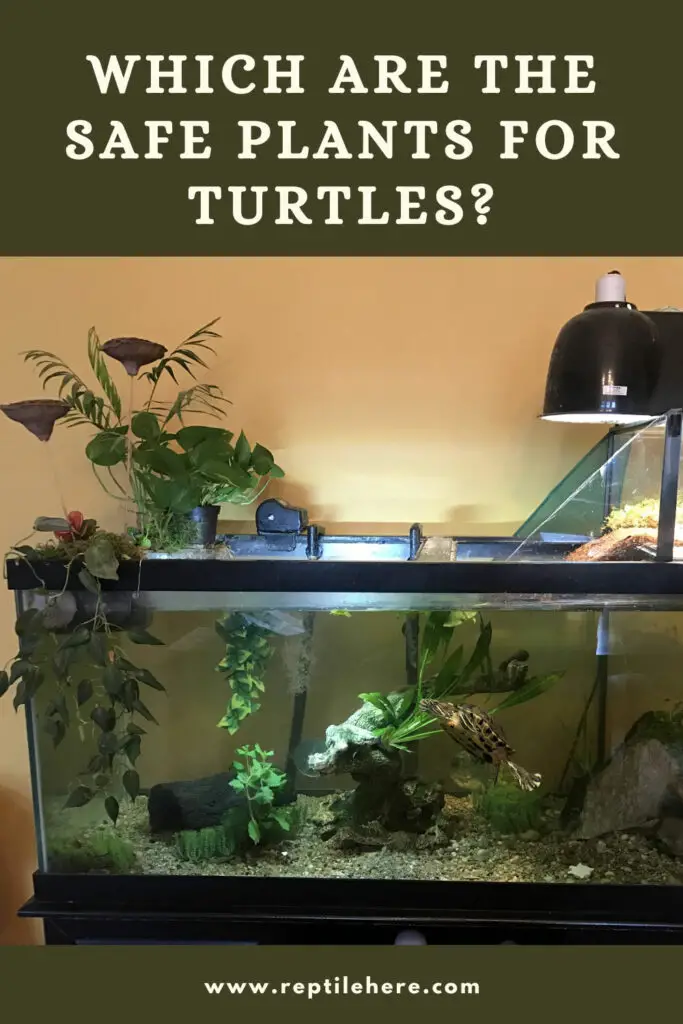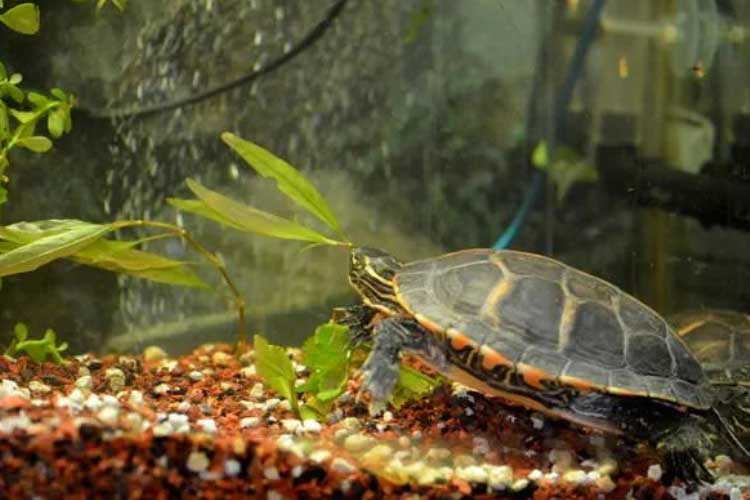Which Are The Safe Plants For Turtles – Everything You Need To Know
Turtles are delicate to feed and handle. A slight mess in the type of plants you feed them can lead to the death of your pet. Some toxic and poisonous plants are harmful to turtles, while others are essential for nutritional and medicinal value.
So, which are the safe plants for turtles? There are wide varieties of turtle-safe plants on land water bodies. The favorite safe plants include aloe vera, spider, Bermuda, and Succulent plants. Plants safe for turtles generally include all plants approved for consumption by turtles with no harm.
This article reviews the safe plants and also the toxic and harmful plants for turtles. In addition, it provides tips on other plants that confuse turtle keepers when it comes to feeding.
Safe Plants For Turtles: A Complete List?
Contents
Turtles like feeding on both land and water plants. Green plants are a source of nutrition and act as hiding points while resting. Not all plants are healthy for a turtle; some are poisonous, while others have no benefits.
Before putting plants in the turtle’s tank, decide whether you want water or land plants. Water plants for turtles need extra care to prevent them from dying, especially when the water becomes saturated with calcium and magnesium ions.
Some plants help provide a conducive environment for the turtle in the tank. The respiration process also absorbs the carbon dioxide in water and releases oxygen to the water for turtle’s use.
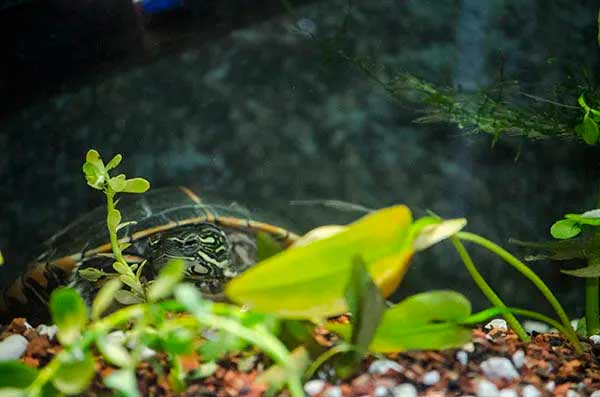
However, some plants are safe for the turtles to feed on. Some have nutritional and medicinal value to the turtle. Of the many plant’s turtles can eat, here are the favorite safe plants that turtles like.
- Aloe vera plants
- Spider plants
- Bermuda
- Succulent plants
If you can’t find the above plants, consider putting the following other plants in the tank for your turtle. You can also introduce a variety of these plants in the tank to offer various tastes to your pet.
- Buckwheat
- Clover
- Lavender
- Plantains
- Pothos
- Rosemary
- Crabgrass
- Dahlia
- Dandelion
- Dichondra
- Alfalfa
- Black Mustard
- Bluegrass Rye
- Spider
- Succulent
- Willow
What Plants Are Toxic To Turtles?
Not all plants are safe for turtles. Some are poisonous and can easily kill your pet. Other plants are not poisonous but are harmful to your turtle. They may affect the normal digestion process leading to bloating or indigestion problems.
It is therefore important to know and differentiate the harmful plants from the safe ones.
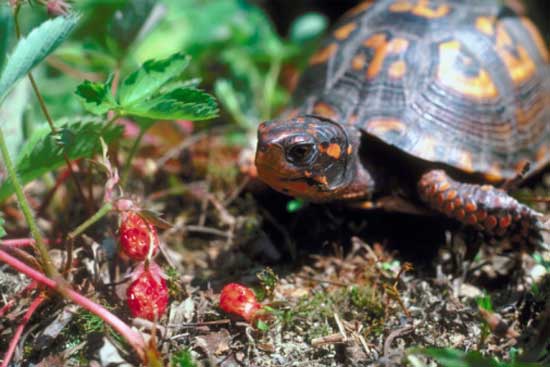
Let’s look at the various toxic plants to turtles. In brackets are the scientific names to help understand the plant better. Avoid these plants at all costs, as turtles should not feed on them.
- Juniper (Juniperus sp.)
- Asparagus Fern (Asparagus springer)
- Castor Bean (Ricinus communis)
- Cyclamen (Cyclamen persicum)
- Daffodil (Narcissus sp.)
- Larkspur (Delphinium sp.)
- Carnation (Dianthus sp.)
- Azalea, Rhododendron species
- Nightshade family (Solanum sp.)
- Avocado (leaves, seeds) (Persea Americana)
- Philodendron (Philodendron sp.)
- Bird of Paradise shrub (Poinciana gilliesii/Caesalpinia gilliesii)
- Boxwood (Buxus sempervirens)
- Lantana (Lantana camara)
- Lily of the Nile (Agapanthus Buttercup family (Ranunculus sp.)
- Caladium (Caladium sp.)
- Hydrangea (Hydrangea sp.)
- Iris (Iris sp.)
- Ivy (Hedera helix)
- Jerusalem Cherry (Solanum pseudocapsicum)
- Columbine (Aquilegia sp.)
- Heavenly Bamboo (Nandina Domestica)
- Hyacinth (Hyacinthus orientalis)
- Amaryllis (Amaryllis belladonna)
- Chinaberry (Melia azedarach)
- Holly (Ilex sp.)
- Creeping Charlie (Glechoma hederacea)
- Carolina Jessamine (Gelsemium sempervirens)
- Euphorbia (Euphorbia sp.)
- Foxglove (Digitalis purpurea)
- Lily of the Valley (Convallaria sp.)
- Lobelia Lupine (Lupinus sp.)
- String of Pearls (Senecio rowleyanus)
- Tomato (Solanum Lycopersicum)
- Love Pea (Abrus precatarius)
- Oleander (Nerium oleander)
- Periwinkle (Vinca sp.)
- Shasta Daisy (Chrysanthemum maximum)
To prevent your turtle from feeding on toxic plants, consider the following.
- Inspect plants before introducing them to the tank
- Keep children away from the tank to avoid the chances of them throwing toxic plants in the tank
- Consult an experienced veterinarian or pet keeper if you come across a plant you don’t know about before introducing it to the tank
- Keep the turtle tank enclosed to prevent the entry of unwanted plants and matter
Can You Put Live Plants In A Turtle Tank?
Yes. You can put live plants in a turtle tank. However, be careful not to put plants that negatively impact your turtle.
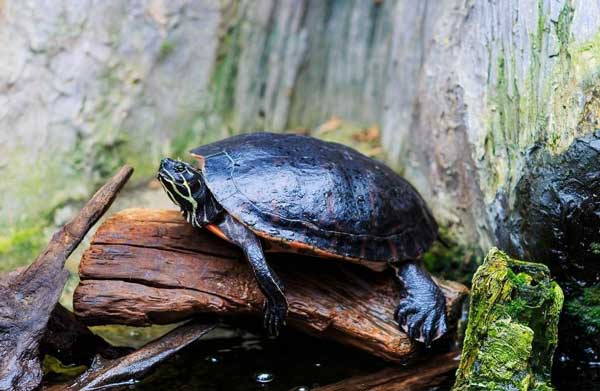
Before introducing live plants for turtles tank, check for the following points.
- Inspect the plant to ensure it is free of pesticides or insecticides harmful to your pet. Since insecticide spray can harm the turtle, pass the plants through warm water to kill the pests.
- Ensure the plant is not grown on lands with inorganic fertilizers. Synthetic chemical fertilizers are harmful if consumed by your turtle. Only use organic farming to grow turtle friendly plants for food.
- Avoid introducing plants with soil carrying seeds of harmful or poisonous plants. They may germinate with the live plant and kill the turtle if consumed.
- Only introduce live plants that can grow underwater. Have more sea plants instead of land plants.
Live plants act as food for the turtle; hence introduce plants that are palatable to the turtle. Some live plants offer shading points for the turtle in the tank.
If you can not put live plants in the tank, supplement the turtles’ diet with nutritious seafood.
How To Stop Turtles From Eating Plants?
Turtles love plants such as the Java moss and can feed on them until they become extinct in the tank. To control their feeding on some plants, you must stop them from eating them without removing them from the tank.
The best method is to introduce plants that turtles hate due to a bad odor or taste into the tank next to the plants they like too much. However, the plant you introduce as a control plant should be safe for the turtle as it may eat the plant anyway.
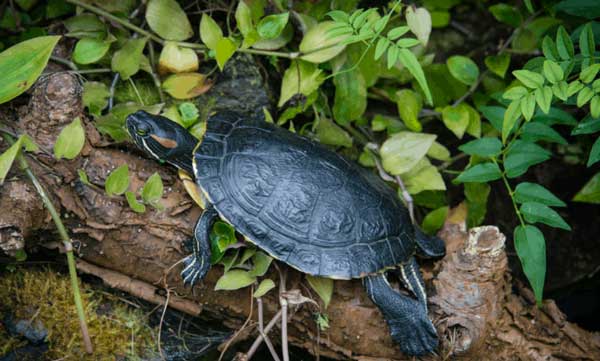
You can also introduce cage walls to protect the plants from the turtle and remove the cage when you want the turtle to feed on them. Some go to the extra point of removing the plant from the tank and returning it only in amounts they want to be consumed.
You can also have the turtle friendly plants introduced in small amounts that the turtle will feed on once.
Is Java Fern Safe For Turtles?
Yes. Java fern is a safe plant for turtles. You don’t have to pin it to the floor with rocks and sticks as it settles well at the base. Java fern helps clear the contaminants in water naturally as they release oxygen into the water.
The plant is nutritious to the turtle when consumed in the right amounts. Too much of Java ferns can cause indigestion due to their hardy nature.
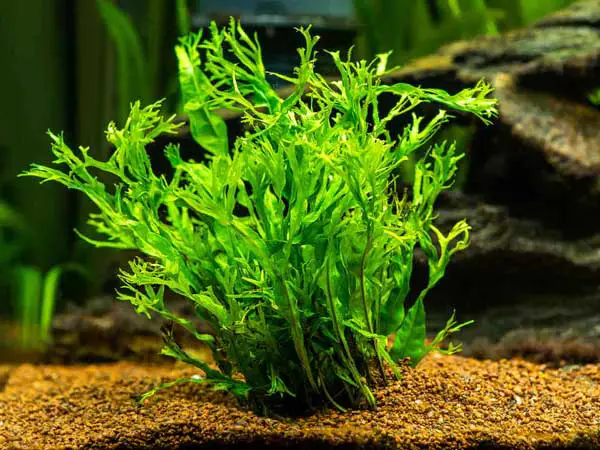
Introduce a variety of other turtle friendly plants in the tank to offer a balanced diet to your turtle. Even if Java fern is safe for turtles, they don’t like it and therefore introduce it in small amounts.
Is Water Lettuce Safe For Turtles?
Water lettuce is among the confusing plants when it comes to the safety of turtles. Theories around the plant indicate that the plant is not recommended in a turtle tank.
However, research shows that lettuce is safe for turtles but should be fed in small amounts. If you plan to put them in the tank, avoid the dwarf water lettuce. The dwarf lettuce is dangerous as it spreads over the water and covers light and oxygen from reaching the turtles.
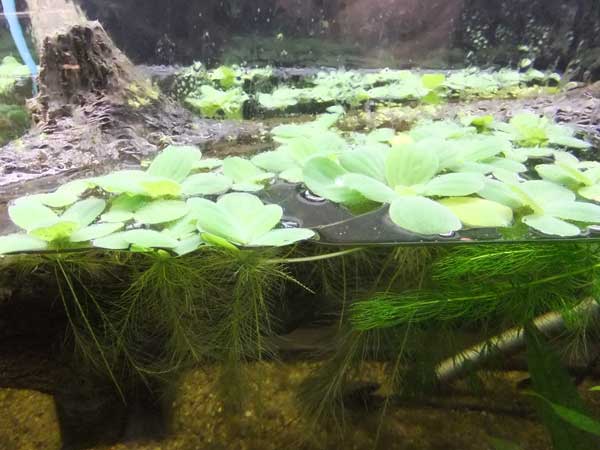
It also inhibits the growth of other plants in the tank. Avoid feeding turtles on water lettuce grown from other ponds and water bodies. Instead, grow them on some potions in the turtle tank.
What Else Can I Put In My Turtle Tank?
Apart from plants in the tank, you can introduce other accessories in the turtle tank to improve the living conditions of the turtle. Consider the following if you wonder what to incorporate in the turtles’ tank.
- UV light
- Submersible water heater
- Aquarium filters
- Basking platform with a heating source
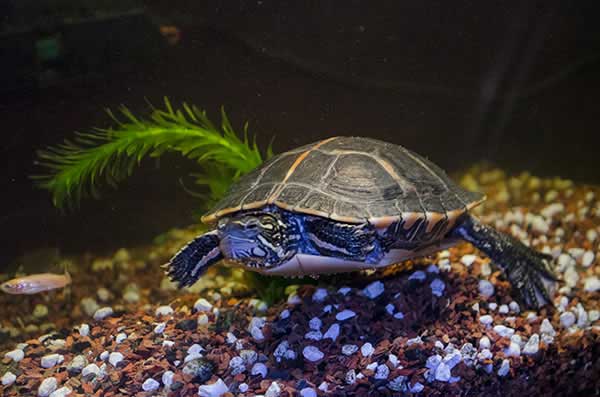
Some pet keepers choose to introduce artificial plants to keep the tank decorated. You can also introduce colored lighting. However, keep the lights low, especially at night, to avoid distracting the turtle.
FAQs
Read the following questions to better understand the types of plants safe for turtles.
The best plants consist of plants that turtles love and those that are safe for them. Some of the turtle friendly plants include common waterweed, Java fern, hornwort, and Amazon sword.
These plants should, however, be introduced in small quantities to avoid digestion problems.
Turtles can be fed on fruits such as strawberries, watermelons, apples, and peas and also be fed on vegetables. Introduce animal prey such as earthworms and grasshoppers to provide a balanced diet. These types of food provide an all-rounded nutritious meal for your pet’s proper growth and development. However, be careful only to feed chemical-free supplements.
Toxic plants consist of plants with a harmful impact on turtles’ health. Most of the plants containing oxalates and dermatitis substances are considered toxic.
Avoid feeding your turtle any toxic plants. When consumed, these toxic plants cause swelling, burning, itching, and painful sores on turtles’ skin. Others will cause instant death, while some will result in stomach complications.
Red-eared slider turtles are fond of fresh vegetables such as carrots, bell peppers, cucumbers, zucchini, and celery. These red-eared terrapins are very active and need a lot of energy to keep them active.
Conclusion
Turtles have a challenging feeding schedule due to their delicate digestive system. They like feeding on plants, especially water plants, for the nutritional value of green plants.
When in the tank, one has to supply plants for the turtle. To avoid feeding on toxic plants, follow the given list of safe plants for turtles you can introduce into the tank.Keep off any toxic or harmful plants or plants you do not know about. Alternate the approved turtle friendly plants and supplement their diet with turtle feeds.
